
Don’t Forget to Wear Your Masks
A Halloween Retrospective Part 1: The Originals
The Halloween horror franchise is an interesting series. The first film is one of the most influential horror movies of all-time, but Michael Myers is probably a comfortable third when it comes to horror icons — with Chucky and Pinhead nipping at his toes — even though the ratio of gold-to-garbage in the Friday the 13th, A Nightmare on Elm Street and Halloween film series are roughly the same. It may be that the first film in the series is so perfect and impactful that it’s hard to actually develop an influential franchise from it. That would explain why they keep remaking the 1978 classic, officially and unofficially.
But the series lives on. It doesn’t quite reach the trippy heights of Elm Street, but it at least tries to do a little more than expected. While Halloween’s attempts to expand the mythology end up, in my opinion, muddled and ultimately a lost cause, I’ve gotta give it points for at least trying. We absolutely continue to get rehashes of the first film, but they at least try to throw a little pizzazz into it.
That’s the reason I’m doing a few articles looking back at the entries in the weird and winding Halloween series. A brand new Halloween is being released this month, so I figured there was no time like the present. Even though I’m a fan of the Rob Zombie remakes (SPOILER ALERT, I guess), I have high hopes for this new entry. Jamie Lee Curtis is back, David Gordon Green is directing, Danny McBride co-wrote it, Blumhouse is producing, and there seems to be little regard for continuity, which I love in my horror franchises. It’s also the third entry in the series that’s simply named Halloween, which is some solid one-upmanship of The Thing franchise.
There should be two more articles in this series coming out soon. I plan to discuss what interests me about this fracture franchise in general and in weird specifics. Of course, I’m going to start where it all began: the original three.
Halloween (1978)

It was the boogeyman.
John Carpenter’s Halloween may not be the first example of a slasher, but it’s the film that perfected and popularized the formula, for better or worse. Like most slashers, it owes a debt to Peeping Tom, Black Christmas, and Psycho, with Carpenter even borrowing the name “Loomis” from the latter film.
Even with the film expanding upon those forerunners, it’s impossible to deny how impressive and original Halloween feels. A lot of different things contribute to that feeling. There’s John Carpenter writing, directing and scoring, and he oozes originality, even when he’s cribbing from the sci-fis and westerns of his youth. You’ve also got Carpenter’s frequent collaborator, Debra Hill, producing and co-writing. She’s often credited for the dialogue between Laurie Strode (Jamie Lee Curtis) and her friends Lynda (P.J. Soles) and Annie (Nancy Loomis), and the attention to detail shows. There isn’t much build-up before the killing begins, but the few scenes we get are so good that we have a good enough insight into these characters and end up legitimately worried about them.
A lot has been written about the original Halloween over the years, and this month in particular. Instead of boring you with another rundown of what works in this classic I want to point out a few things that I think are underrated or just don’t get enough attention in general.
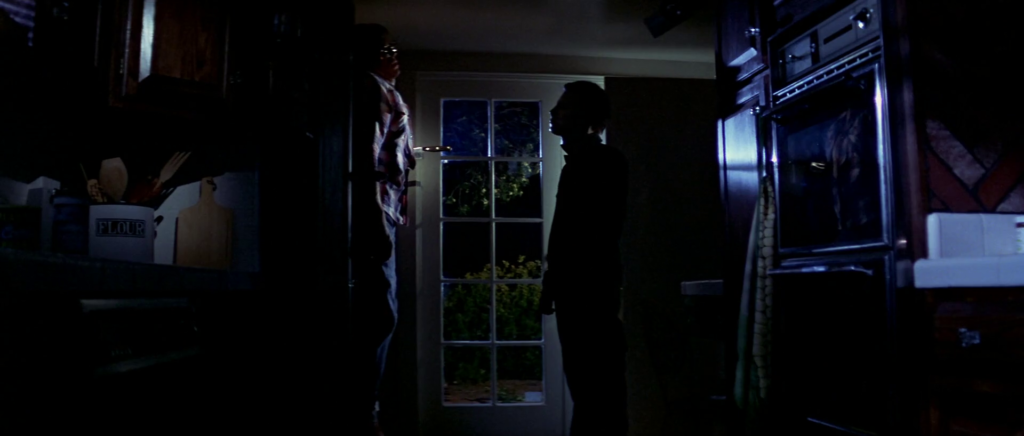
The first thing I want to single out is Nancy Loomis’s performance. Loomis (which is a stage name, Nancy Kyes is her real name) was a regular bit player in early Carpenter films. She popped up in Assault on Precinct 13 (also a wardrobe mistress), The Fog and Halloween III: Season of the Witch. I’ve always thought she had a great presence and her death was the one that hit the hardest for me. Her acting talent didn’t come close to other Carpenter favourites like Adrienne Barbeau or Halloween’s own Jamie Lee Curtis, but she must have at least been on-par with Linnea Quigley. Heavy dialogue scenes were very stage-y, but she nailed it any time she had to search empty rooms or react to strange noises. Loomis should have been a Scream Queen, and I’d have watched anything she was in.
Another aspect of the film that I love, which has absolutely been talked about before, is how much of it actually takes place in the daylight. We see Michael Myers several times throughout the day leading up to Halloween night, mostly from Laurie’s point-of-view. He’s a spectre haunting her — there’s a reason he’s referred to as The Shape or The Boogeyman — and that build up is necessary to sell their final confrontation.
I’ve always found the scariest things in horror films to be something that’s abnormal invading the mundane. Halloween excels at that, throwing Michael Myers’s large, still, masked frame in places it doesn’t belong. He’s standing in the distance, on the sidewalk, just beside a hedge. He’s standing in a backyard by a clothesline. He follows you around the suburban neighbourhood you always thought you’d be safe in.

2014’s It Follows takes a lot from Halloween, and one of those things is this sense of dread in the everyday. One of the most effective scenes is a high school kid in class, peering out the window when they realize the creature is slowly headed towards them, a deliberate reference to Michael standing on the sidewalk by his stolen car and staring at Laurie while she sits in class. We expect to be terrified in the dark, but being helpless in broad daylight is a different kind of terror that Carpenter pulls off perfectly.
The last thing I want to talk about is a part of the movie I never really gave too much thought until a recent viewing. When Dr. Samuel Loomis (Donald Pleasance) and Marion Chambers (Nancy Stephens) drive to Smith’s Grove Sanitarium to transfer Michael to his trial, they notice patients wandering free on the grounds. Loomis gets out of the car — classic mistake — and Michael leaps on top of it and grabs at Marion.
This version of Michael is strangely human. He’s much different from the Michael we see in the rest of the film. He isn’t The Shape or The Boogeyman, he’s simply an escapee from a sanitarium, scrambling into a car and driving off towards freedom and revenge. I think it’s the most human we ever see Michael until the Rob Zombie films, and it’s an interesting moment.
Halloween Stat Count:
Kills: 6
Jamie Lee Curtis: Hell Yes
Dr. Loomis: Hell Yes
Danielle Harris: No
Druid/Cult References: No
Redneck References: No
Ben Tramer Alert: Ben Tramer is mentioned
Does Michael Myers Die?: Yes
Continuity Status: The Original
Halloween II (1981)
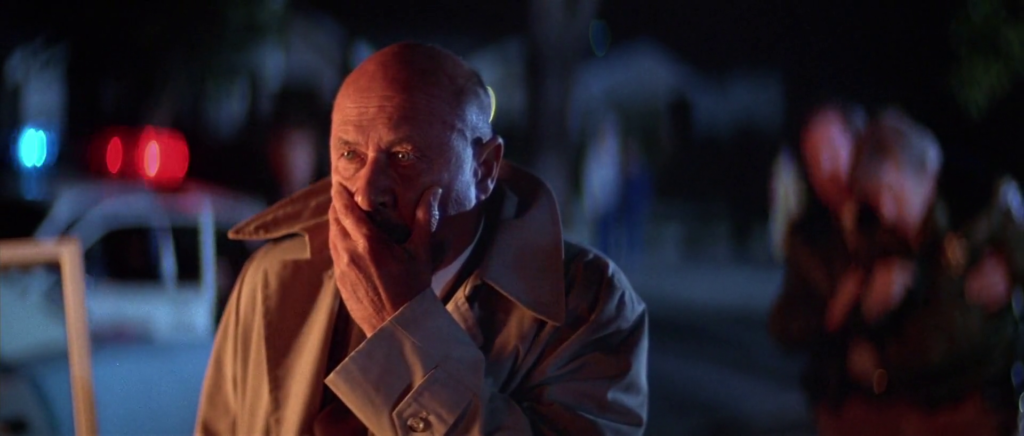
You don’t know what death is.
When a film is successful, people demand a sequel. It’s always a Catch-22: how do you capture the spirit of the original without making a direct copy while still giving the audiences what they want? Carpenter’s original plan was to make Halloween an anthology franchise, telling a different story with each entry. While he’d get a shot at this soon (just scroll down to see the results), the instantly iconic status of Laurie Strode and Michael Myers made a direct follow-up necessary in the eyes of the audiences and money-men alike.
Was that the right move?
There are a few things that hold Halloween II back from being well-regarded. First of all, John Carpenter wanted the Halloween franchise to be an anthology, so he was reluctant to continue the story of Michael Myers. Since the first movie was such a success, and since it’s a horror movie, of course, they made a direct sequel. It also has to follow up one of the best films of all time, which is something that’s plagued decent sequels for a while, from Jaws 2 to Psycho II. Halloween II isn’t quite on par with the underappreciated gem that Psycho II is. It still isn’t bad though.
Halloween II picks up where the first film left off, and you can instantly tell that you need to lower your expectations. It does start with a decent one-shot following Michael through a backyard and into a kitchen to grab a new killing knife, but things soon even out and become a little too run-of-the-mill. Laurie is brought to Haddonfield Memorial Hospital while Dr. Loomis and Sheriff Brackett (Charles Cyphers) continue the hunt for Michael.
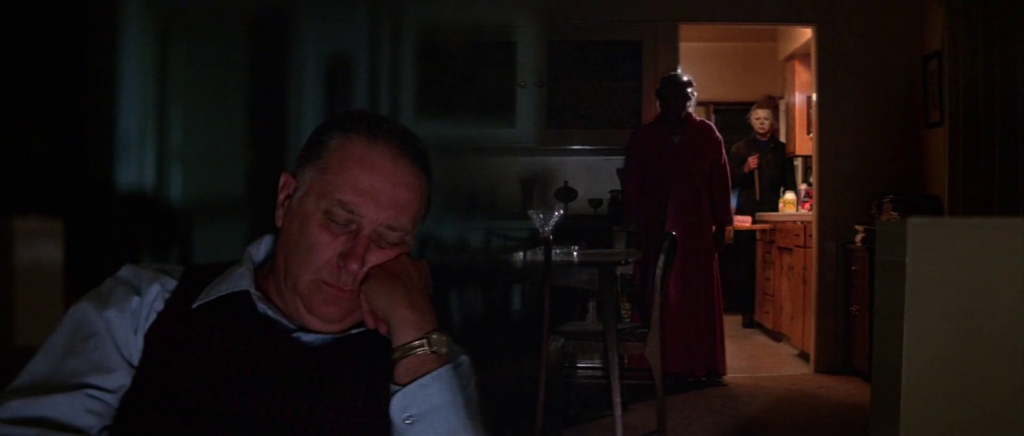
I’ve always thought that there was a lot of untapped potential when it comes to horror films in hospitals. There are plenty of thrillers and low budget films that use the setting, but nothing has taken full advantage and really stuck in the mind. The amount of dread and gore inherent in a hospital seems like it’d make it a standard alongside haunted mansion or abandoned sanitarium.
At the hospital, we get a new cast of side characters who are doctors, EMT’s, nurses and administrators, but none of them make much of an impression. I do like a small part where a mother is bringing her kid in because he bit into candy with a razor blade stuck into it. It’s a gnarly effect and a good use of Halloween iconography and urban legend, even though it’s incidental to everything else. Unfortunately, Laurie being stuck in a hospital means she’s sidelined for the majority of the film, only getting in on the action on the third act. If you have Jamie Lee Curtis, it seems like a crime not to use her as much as you can.
Outside of the hospital, Loomis and Brackett spend a lot of time together, which is enjoyable. Donald Pleasance is a resource that you want to get the most out of, and he goes all out in this entry. It is — or should have been — his swan song as the character, and he makes the most of it. Brackett is exactly what you’d expect from a small town Sheriff, but he actually puts up with Loomis’s shit for a lot longer than I probably would have.
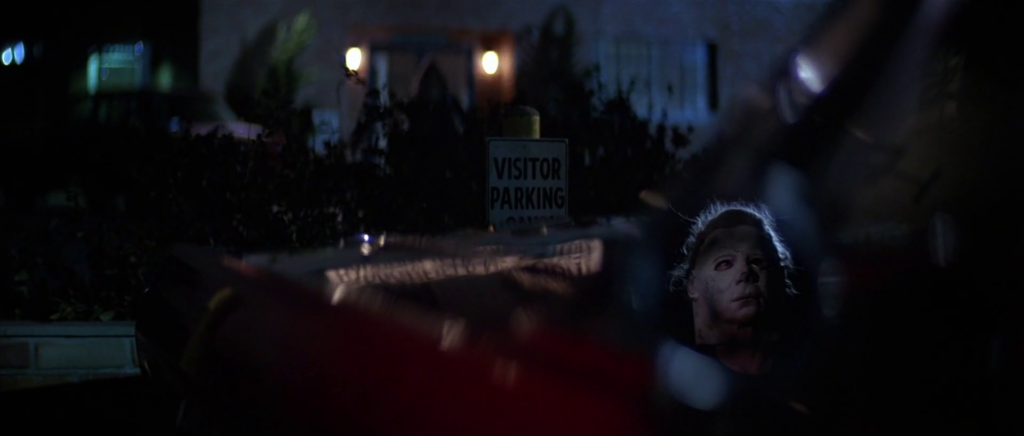
Michael’s rampage in the hospital is decent. His killing methods have expanded, as you’d expect in a sequel with a bigger body count. Now he uses needles, hammers, and hot tubs to off his victims. The kills are generally creative and staged well, and I love the Hammer-style cherry-red blood, but I think they’d matter more if we cared about any of the characters who died. It’s quality over quantity for me when it comes to horror movie kills.
Halloween II finishes off the story of Michael Myers, Laurie Strode and Dr. Loomis in a literally explosive fashion. We end up learning a bit about Samhain, the Celtic lord of the dead, and the fact that Laurie is Michael’s younger sister. Both of those are questionable additions to the Halloween mythology and are things I’ll discuss more in-depth in the next entry. The finale itself is excellent, making good use of character and setting to put a cap on things. Laurie shoots Michael’s eyes out, and a mortally wounded Dr. Loomis gives Michael his last session by blowing him up.
Overall, Halloween II failed to meet critical expectations but did okay commercially. I think the first two Halloween films work well together and even if the lead-up drags a bit the finale is worth the effort. If it were a standalone film without the kind of talent working behind the scenes on this one I’d consider it a raging success, but it’s a Jaws 2, through and through.
Halloween Stat Count:
Kills: 10
Jamie Lee Curtis: Hell Yes
Dr. Loomis: Hell Yes
Danielle Harris: No
Druid/Cult References: Yes
Redneck References: No
Ben Tramer Alert: Ben Tramer is seen and killed
Does Michael Myers Die?: Yes
Continuity Status: Direct follow-up to original
Halloween III: Season of the Witch (1982)
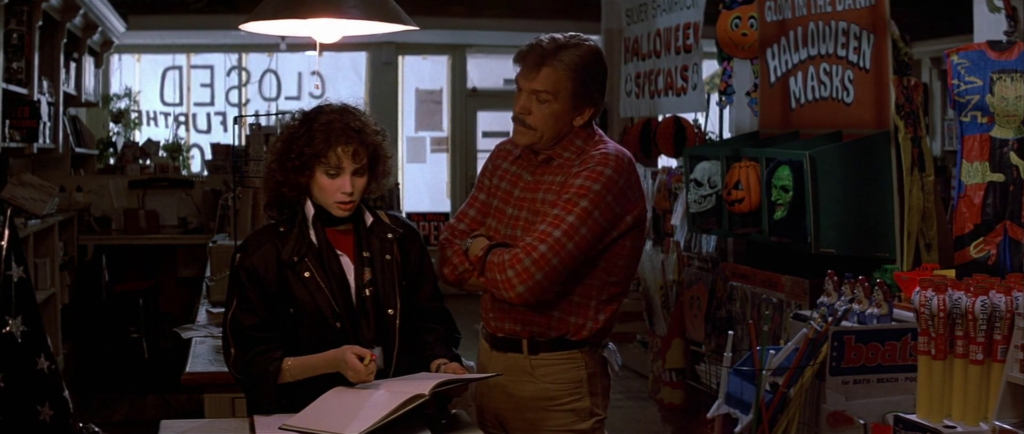
Don’t miss it… and don’t forget to wear your masks.
With Halloween II wrapping up the Michael Myers storyline (ignore the fact that there are eight more films after this one) Carpenter finally got a shot at turning the series into an anthology. Halloween III: Season of the Witch is a very, very odd choice for a follow-up, but it makes some sense. It’s a big departure from the slasher style the original helped clarify, drawing more from films about witchcraft, science fiction, and British horror.
One of my favourite types of protagonists are sleazy dirtbags. It always felt a little more realistic that the people put into these sorts of situations would be an average asshole like you or me. (You’re probably not an asshole, but I’m trying to make a point.) Tom Atkins plays one hell of a sleazy dirtbag in Season of the Witch. Dan Challis, an alcoholic doctor who, within 25 minutes, has inappropriately hit on two of his coworkers and called his ex-wife twice to bail on his kids. When he’s pressed for a fake name to keep his cover the first name he can think of his “Smith.” He’s a fuck-up, but the weird circumstances behind the brutal murder of a patient pique his curiosity, and ours, so he’s our guy for the rest of the film.
Season of the Witch has an odd clash of sensibilities that I really like, even though it doesn’t quite come together. Nigel Kneale wrote the story, and that makes total sense. Pieces of Stonehenge being used as a widespread weapon — not to mention a crazy mix of magic and technology — are very Kneale-ish. I’m a huge fan of the Quatermass miniseries and films, but Kneale is notoriously prickly, so I’m not surprised he asked for his name to be removed from the film when they decided to rework the dialogue. Nevertheless, a big chunk of my enjoyment comes from his input, and I’m always grateful for more work from him.
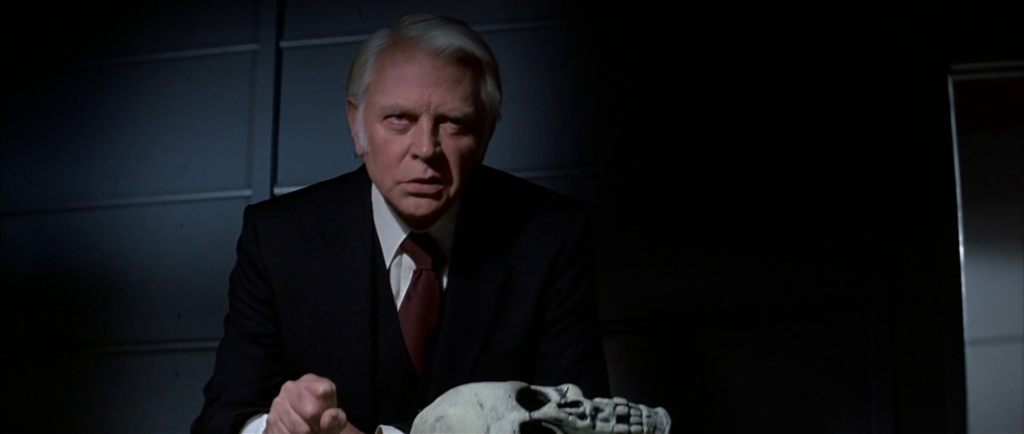
The structure of Season of the Witch is very strange. First of all, it takes place in a world where the film Halloween exists. Not only does it exist, but it’s the film being advertised as preceding the world-ending trigger that’ll melt the head of every kid wearing a Silver Shamrock mask and turn their skull into a pile of snakes, worms, and crickets. Of course, we don’t really find this out for a while. Sure, we suspect that Silver Shamrock is up to something weird. But we have to follow our piece of shit protagonist as he investigates with his murdered patient’s way-too-young daughter.
This guy, I shit you not, is laying naked in bed with her after they have absolutely just had sex and he asks her how old she is. After they’ve had sex. When I talk about him being a real trash fire, I absolutely mean it. Even later on, when Silver Shamrock owner Conal Cochran (Dan O’Herlihy) is explaining his plan as best he can, Dr. Challis is still rolling his eyes and looks like he doesn’t care. The entire reason you’re there is to find out what the hell is going on! This segment does include one of my favourite things from any movie. When Cochran reveals the large piece of Stonehenge in the factory — something alluded to in an earlier news piece –, he exclaims “we had a time getting it here! You wouldn’t believe how we did it!” and then never clarifies further. It’s a hell of a way to gloss over a completely bonkers aspect of your story.
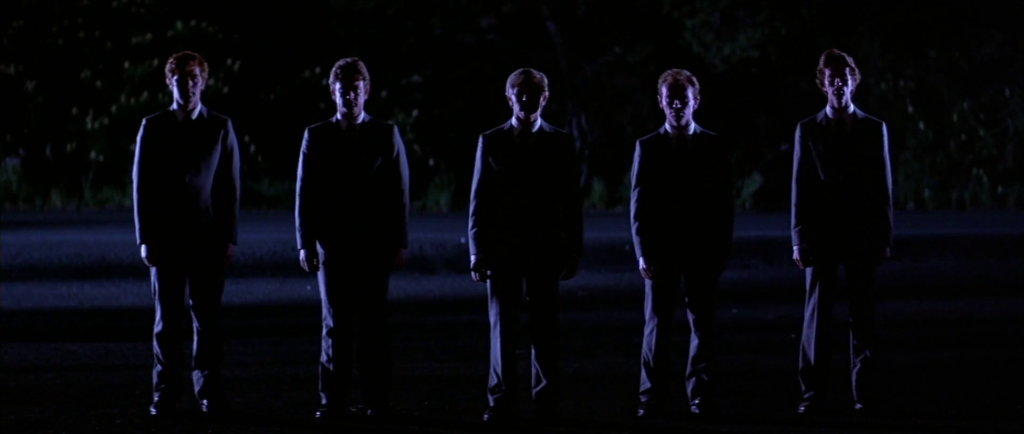
I don’t think I mentioned that there are androids. Cochran has androids working for him. It isn’t even really that big of a deal, mostly because he’s making a doomsday device out of Stonehenge. So there’s a lot going on.
Season of the Witch’s eyes are bigger than its stomach. It has a lot going on and kind of backloads too much story and information. But it actually works for me. Atkins is a weirdly charming presence, regardless of how shitty his character acts. There’s also a classic The Twilight Zone-style dark ending that you wouldn’t be able to get from another straight slasher.
Halloween III: Season of the Witch was a critical and commercial failure, but Carpenter got to try out his anthology idea, and I’m glad it exists. Its reputation has grown in recent years, and it’s almost, amusingly, overrated in some circles. Don’t get me wrong, it’s a fun watch that’s well-shot and unique enough to stand out, but it’s no Halloween.
Halloween Stat Count:
Kills: 12 humans, 14 androids, countless brats
Jamie Lee Curtis: Hell Yes (voice cameo)
Dr. Loomis: No
Danielle Harris: No
Druid/Cult References: Hell Yes
Redneck References: No
Ben Tramer Alert: No
Does Michael Myers Die?: No, only seen in TV commercial
Continuity Status: In a world where the original Halloween exists
These three movies are a good encapsulation of horror films in general. Something truly original and genre-defining, a follow-up to cash in on the original’s success and a messy, off-the-wall failure that eventually gains cult-classic status.
I really like all three movies in very different and personal ways. I even think that the weakest of the bunch, Halloween II, is the one I’ve seen the most. Each of them have their strengths and weaknesses… except for Halloween. That baby is pure strength.
If there’s one constant when it comes to iconic horror films, it’s that over time they will absolutely be run into the ground. The Halloween films are no different, and I plan on discussing that decline next time in… A Halloween Retrospective Part 2: Diminishing Returns.
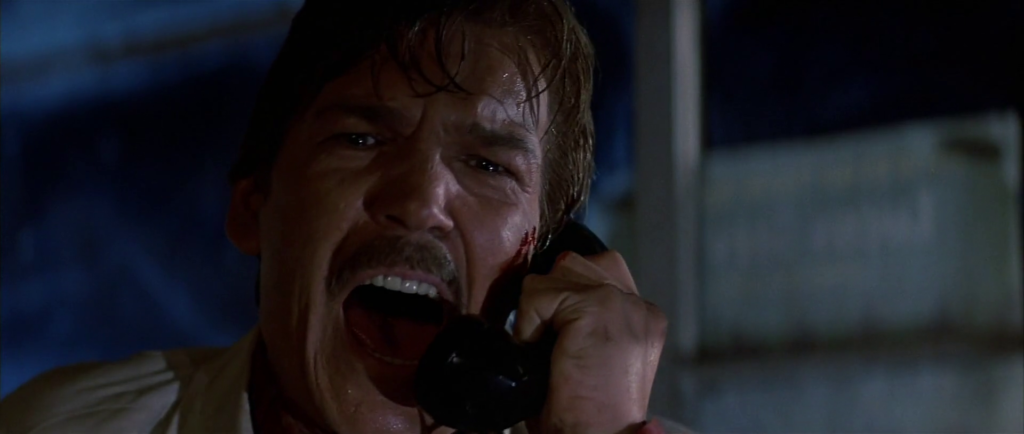


![[REVIEW] FUTURE STATE: WONDER WOMAN #1](https://geekd-out.com/wp-content/uploads/2021/01/future-state-wonder-woman-feat-150x150.jpg)
![[REVIEW] SUPERMAN’S PAL, JIMMY OLSEN #1](https://geekd-out.com/wp-content/uploads/2019/07/jimmy-olsen-featured-150x150.png)
2 thoughts on “Don’t Forget to Wear Your Masks: A Halloween Retrospective Part 1”